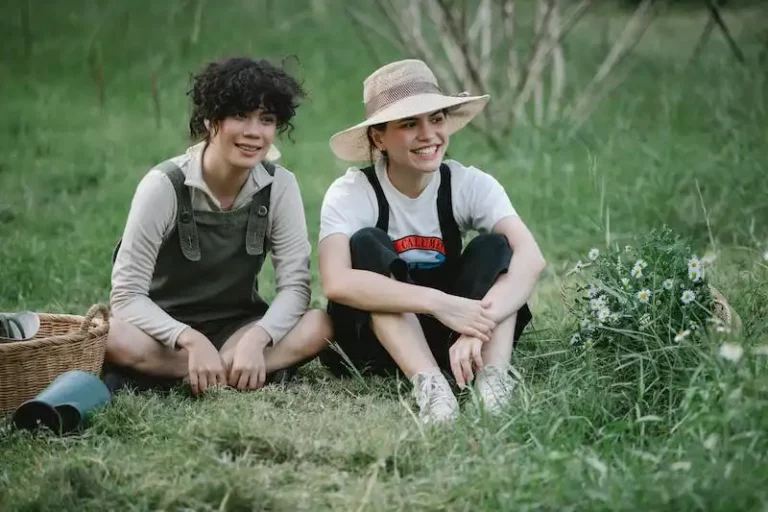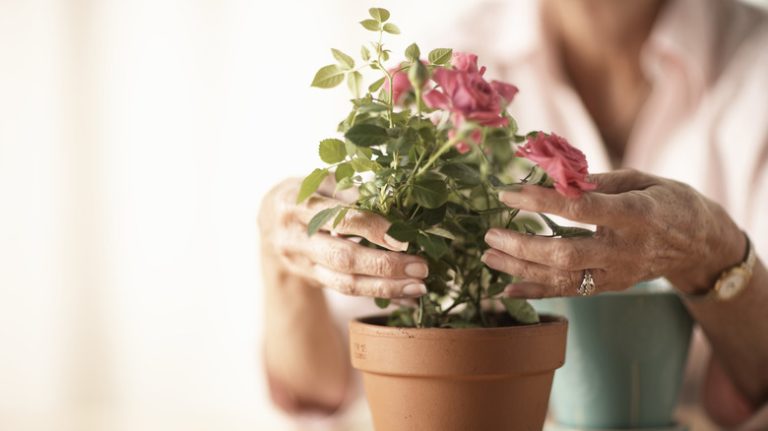Welcome to The Garden Helper, your ultimate guide to creating and maintaining a beautiful garden! Whether you are a seasoned gardener or just beginning to discover the joys of gardening, we are here to provide you with all the information and tips you need.
One of the key aspects of successful gardening is selecting the right plants for your garden. With so many options available, it can be overwhelming to know where to begin. That’s where The Garden Helper comes in! We offer expert advice on selecting the ideal plants for your specific conditions, whether you have a sunny garden or a shaded area in need of some color.
In addition to selecting the right plants, proper care is crucial to ensuring your garden thrives. The Garden Helper provides valuable information on fertilizing, watering, pruning, and dealing with common problems such as diseases and pests. We even have a section dedicated to frequently asked questions, where you can find answers to all your gardening queries.
For those interested in creating an ornamental garden, we have a wealth of information on various flowers and plants. From the stunning daisy-like blooms of osteospermums to the vibrant colors of dimorphotheca, you’ll find everything you need to know to grow these beautiful and eye-catching plants.
At The Garden Helper, we understand the importance of creating bee-friendly gardens and promoting natural solutions. In our articles, you’ll find tips on using organic fertilizers, neem oil to combat pests, and how to attract beneficial insects to your garden. We believe that gardening should not only be beautiful but also sustainable and environmentally friendly.
So whether you’re looking for advice on selecting the perfect plants for your garden, tips on caring for your favorite annuals, or troubleshooting common gardening problems, The Garden Helper is your go-to source. Join our community of passionate gardeners and let us help you create a garden that will flourish and bring you joy for years to come!
African Daisy How To Grow And Care For Osteospermum
African daisies, also known as osteospermums, are beautiful flowering plants that can brighten up your garden, balcony, or beds. They are native to the Cape region of South Africa and are commonly grown as ornamental plants around the world.
If you are looking to grow and care for osteospermums, here is a guide to help you out.
Planting and Care
African daisies are best grown in well-drained soil and require a sunny location. They prefer loose and well-draining soil, so be sure to provide them with a mixture of natural soil and well-draining compost.
It’s important to water osteospermums regularly, especially during dry periods. While they are drought tolerant, they still need consistent watering for best results. You’ll also need to fertilize them monthly from March to September to ensure optimal growth.
When it comes to pruning, osteospermums benefit from regular deadheading to encourage new blooms. This involves removing spent flowers to encourage continuous blooming throughout the growing season. Pruning also helps maintain the overall shape and size of the plant.
Pests and Problems
One common problem that osteospermums may face is infestation by whiteflies. These tiny pests can cause wilting and damage the plant. To control whiteflies, you can use insecticidal soaps or neem oil. Another pest that may affect osteospermums is aphids, which can be controlled with insecticidal sprays or by attracting beneficial insects like ladybugs and lacewings.
Another important factor to consider when caring for African daisies is frost tolerance. While they can tolerate some cold temperatures, it’s best to protect them from frost. Covering them with frost blankets or moving potted plants indoors during extreme cold weather can help prevent damage.
Colour Varieties
Osteospermums come in a variety of colours, including shades of white, purple, yellow, and pink. Some varieties even have bi-colored blooms, adding more visual interest to your garden or balcony.
Their daisy-like blooms are not only beautiful but also serve as a food source for bees and other pollinators. So, growing African daisies can also contribute to creating a bee-friendly environment.
Overall, African daisies are relatively easy to grow and care for. By following these guidelines and providing them with the right conditions, you can enjoy their vibrant blooms throughout the growing season. So, don’t hesitate to include osteospermums in your garden, as they are an excellent source of colour and beauty!
Quick African Daisy Care Guide
African Daisies, also known as Osteospermums, are beautiful flowering plants that are native to the Central and Southern regions of Africa. They come in a wide range of colors, from vibrant purples and blues to sunny yellows and oranges.
For gardeners looking to cultivate African Daisies, it is important to provide them with the right care. These plants prefer well-draining soil and a sunny location, as they thrive in warmer climates. Regular watering is important, especially during the dry summer months. It is recommended to water the plants in the morning for best results. Sprinkling water directly onto the soil, rather than over the leaves, helps to prevent diseases and pest problems.
African Daisies are known for their abundant and long-lasting blooms, which typically appear from early spring through late fall. Deadheading the flowers regularly promotes continuous blooming and prevents the plant from going to seed prematurely. It is also important to fertilize the African Daisies regularly with a well-balanced fertilizer to ensure healthy growth.
Propagation of African Daisies can be done through both seeds and cuttings. For seed propagation, it is best to start them indoors 6-8 weeks before the last frost date. Once the seedlings have grown a few inches tall, they can be transplanted outdoors. As for cuttings, it is recommended to take semi-ripe cuttings in early summer and root them in a well-draining soil mix. Using a rooting hormone can help with successful rooting.
African Daisies are relatively low-maintenance plants, but there are a few common problems that may arise. Pests such as aphids and slugs can occasionally be an issue, so regular inspections and appropriate pest control measures should be taken. Additionally, overwatering or planting in poor soil can lead to root rot and other diseases. Mulching the plants and providing good air circulation can help prevent these problems.
African Daisies make fantastic additions to borders, flower beds, and even container gardens. Their vibrant and showy flowers are sure to catch the eye. Whether grown in a sunny balcony or a larger garden, these daisies will add a splash of color and beauty to any space.
For more information and answers to specific questions, it is always a good idea to consult with local gardening resources or updated online gardening guides. Happy gardening and enjoy the beauty of African Daisies!
Blue-Eyed Daisy Ideal For Beds Containers and Borders
If you’re looking for a beautiful and versatile flower for your garden, the blue-eyed daisy is a great choice. Whether you’re planting them in beds, containers, or borders, you’ll love the vibrant blooms and easy-care nature of this plant.
These daisies produce lovely white flowers with blue centers, making them a standout in any garden. They thrive in well-drained soil and can tolerate a variety of growing conditions. Whether you live in a hot, dry climate or a cool, moist one, the blue-eyed daisy will thrive in your garden.
When it comes to propagating blue-eyed daisies, taking care of them is a breeze. Start by selecting a location that contains good quality soil. If you have any problems with your soil, consider adding fertilizer or compost to improve its fertility. Blue-eyed daisies don’t require a lot of fertilizer, so a slow-release option is usually sufficient.
If you’re growing blue-eyed daisies from seeds, begin by sprinkling them onto a flat of well-drained soil. Water them regularly, but make sure not to let them sit in soggy conditions. Once the seedlings begin to grow, you can transplant them into containers or directly into your garden beds.
The blue-eyed daisy is known for its resistance to diseases and pests, making it a great choice for low-maintenance gardens. While you may encounter some common gardening problems, such as aphids or powdery mildew, these can be easily controlled with insecticides or fungicides. Just make sure to follow the instructions on the label and apply them as needed.
Another advantage of blue-eyed daisies is their long flowering period. They bloom from early spring until late summer, providing continuous color and beauty to your garden. They also make excellent cut flowers, allowing you to bring their beauty indoors.
If you have limited space in your garden, you can still enjoy the beauty of blue-eyed daisies. They are perfect for balcony gardens or container gardens. Just make sure to choose a container with good drainage and use a well-drained soil mix. Water them regularly, but be careful not to overwater as this can lead to root rot. Also, make sure to catch any excess water to avoid staining your balcony or deck.
Blue-eyed daisies are native to southern Africa and are very adaptable to various habitats. They can thrive in full sun or partial shade, although they tend to produce more flowers when grown in full sun. If you live in an area with hot summers, providing them some shade during the hottest part of the day can help prevent wilting.
In conclusion, blue-eyed daisies are an ideal choice for beds, containers, and borders in your garden. They are easy to propagate, low-maintenance, and offer beautiful flowers that will brighten up any space. Whether you’re a seasoned gardener or just starting out, these daisies are sure to bring joy to your garden every time you see them.
If you have any questions or concerns about growing blue-eyed daisies, our FAQ section contains answers to common gardening questions. This guide will help you troubleshoot any problems you may encounter and provide useful tips for successful propagation and care of blue-eyed daisies.



